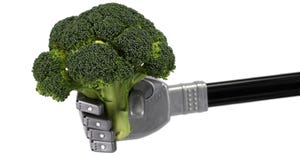Smarter Sorting used machine learning to build a database of materials normally classified as household hazardous waste that can be reused.
Several years ago, Chris Ripley was working with Austin Resource Recovery (ARR), formerly known as Solid Waste Services in Austin, Texas, to build a latex paint recycling system. He needed paint thinner. Not knowing anything about household hazardous waste (HHW), he walked over to a bin full of chemical products and grabbed two cans of the substance.
The staff was horrified and asked him to put down the “hazardous waste.” Confused, Ripley asked how much they charged for this paint thinner. The ARR staff told him that they did not sell it. Instead, they paid a company to haul it away and incinerate it. As a longtime technology executive, entrepreneur and zero waste aficionado, this piqued Ripley’s curiosity.
Upon investigation, Ripley discovered that valuable consumer chemical products were being categorized as HHW and then burned. Ripley, and his partner Charlie Vallely, set out to solve the data disconnect with the goal of building a system that would allow businesses to reuse consumer chemical products, while greatly reducing the 1 billion pounds of HHW incinerated annually. This led to the duo founding Smarter Sorting, with Ripley as CEO and Vallely as CIO.
“HHW is burned because of previously unsolved data and categorization problems,” says Ripley. “While we have a hardware component, the core of our solution is our proprietary data set that organizes the chemical, regulatory and transportation data for every consumer chemical product that is or has been on the market.”
Smarter Sorting used machine learning to accomplish this task, extracting information from sources such as product packaging, safety data sheets and retail product descriptions. It also measured the heights and weights of products.
“We have neural networks to do image recognition, simple clustering algorithms for classification, and various techniques like random forests for predictions,” he says.
On top of Smarter Sorting’s machine learning built database, the company built software that is specifically designed for HHW operations. The software uses the data sets to recognize, categorize and sort every product scanned. Because the company is built for municipal facilities, it can customize the software to match the facility’s existing processes, making it easier for hazardous waste operators to learn to use the technology.
For example, after bleach and fertilizer is manufactured, manufacturers ship these products to stores like Home Depot or Lowe’s. Consumers buy the products and store them in their garages. When disposing of these products, consumers drop them off at municipal HHW facilities instead of throwing them away.
"Through this entire line of actions, the bleach and fertilizer is classified as a consumer chemical product, a product that can be shipped, transported and safely used,” says Ripley. “However, as soon as the bleach and fertilizer arrive at the municipal HHW facility, its categorization changes to being HHW. The categorization changes because the facility and their staff have no idea what is in the millions of different products that move through their facility. For this reason, the safe and legal response has been to treat it all like hazardous waste, incinerating it to ensure there are no dangerous mistakes (like mixing ammonia and bleach) and no dumping.”
This is where Smarter Sorting comes in. When products like bleach and fertilizer arrive at a municipal HHW facility, hazardous waste operators can use the company’s technology to scan the product. Instead of being a categorized as a potentially dangerous chemical product, the bleach and fertilizer are identified by the system as used bleach and fertilizer and sorted based on chemical and regulatory information. The hazardous waste operators are immediately told by the system which reuse bin to place each item in. While from a legal standpoint, each item exists within the system as a used product complete with a safety data sheet and all applicable state and federal regulatory information.
“At a time when major cities have implemented and are working to accomplish zero waste goals, we provide the only reuse solution for HHW streams,” says Ripley. “A refrain we commonly hear from municipal HHW managers is that they’ve spent their entire careers frustrated they were forced to incinerate products that were clearly valuable. We’re the industry solution that finally allows them to stop incinerating mislabeled ‘waste,’ instead diverting it into reuse.”
Currently, Smarter Sorting has 10 municipal customers including Austin, Portland, Ore., Salt Lake City, Boulder, Colo., Burlington, Vt., and San Mateo County, Calif. The company has an additional 15 municipalities in the pipeline, including Los Angeles County and King County, Wash. It also works with Canadian retailer Canadian Tire.
“Working with Charlie and Chris was great. They really believe in the product and the customer service is fantastic,” says Dawn Whipple, assistant division manager and HHW program manager at Austin Resource Recovery. “It is really nice to have a company that cares that much about its customers. Partnering with Smarter Sorting has doubled the amount of material we are able to reuse. We already have a pretty robust ReUse Store so that is definitely impressive.”
Ripley says the future of this technology is mass adoption and sorting based solely on image recognition.
“We believe the main challenge is adoption—a challenge that will be solved with time,” he says. “The hardware and software is easy to use, and we provide full customer training and support, meaning that onsite implementation and integration is relatively simple. We truly believe there are no substantive challenges to using the product, only mental challenges related to accepting and adopting a new technological solution to a very old problem.”
About the Author(s)
You May Also Like


